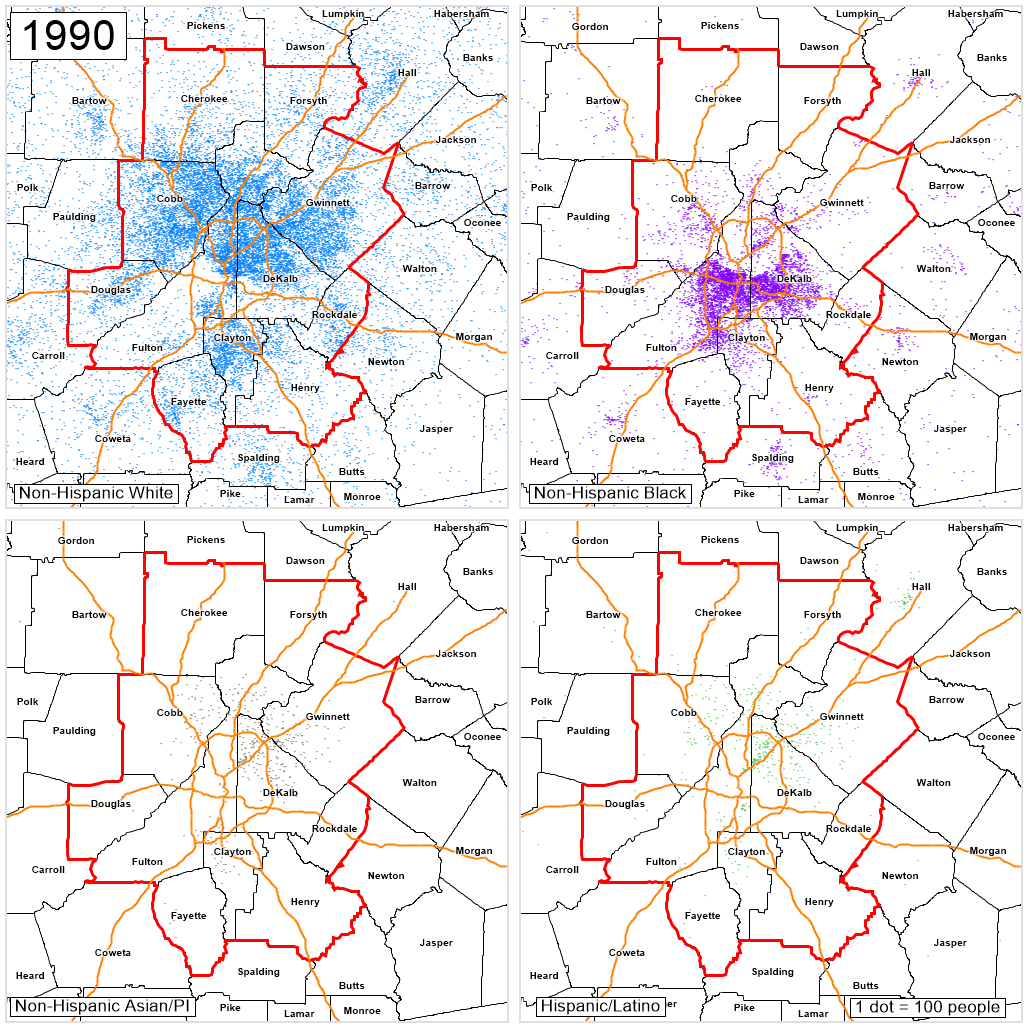In a previous post, we examined how the population of ARC’s 11-county region has nearly doubled over the past 30 years. But there’s a lot more to it than that: The region has become much more diverse since 1990, and there have been significant shifts in where different groups of people choose to live.
In terms of diversity, the 11-County area has gained more than 140,000 Non-Hispanic White residents since 1990 yet has transitioned from majority Non-Hispanic White (69% in 1990) to majority Non-White by 2010 (46% Non-Hispanic White). Today the shift is even more pronounced, with 39% of residents identifying as Non-Hispanic White in 2020. At the same time, the Asian and Pacific Islander population has roughly quadrupled its population share from just under 2 percent to nearly 8 percent of the region, and the Hispanic population share has grown from just over 2 percent to more than 13 percent.
With regards to population shifts, there have been significant moves of the Non-Hispanic White population out of inner-ring suburban counties such as Clayton and Rockdale and increased settlement in outer counties such as Cherokee and Forsyth. Non-Hispanic Whites have also made a smaller move back inside the Perimeter. Black residents have migrated from concentrated portions of Fulton and DeKalb counites into many of the inner-ring counties. The Asian community has settled primarily on the northside in north DeKalb, north Fulton, Gwinnett, Cobb, and most recently Forsyth counties. And the Hispanic population settled primarily up the Buford Highway corridor, first in DeKalb, then into Gwinnett, with other significant pockets in Cobb and Clayton counties.
The animation below is a dot density map, where each dot represents 100 people randomly scattered within the Census tract of residence. In this way, the map shows not just which counties have particular populations, but how those populations have been distributed within those counties over time.


